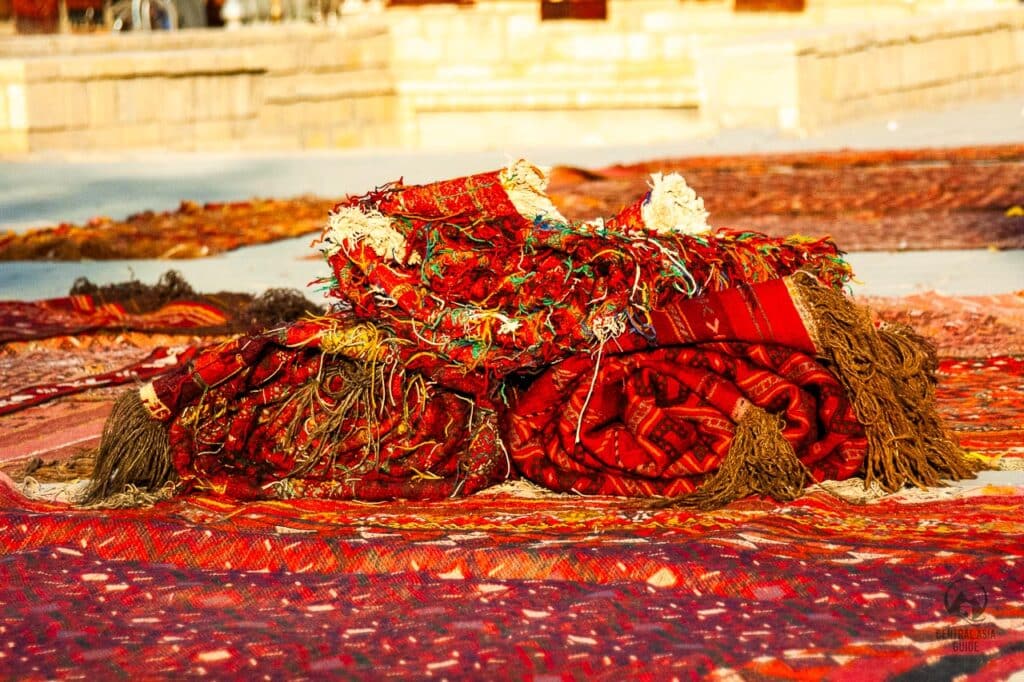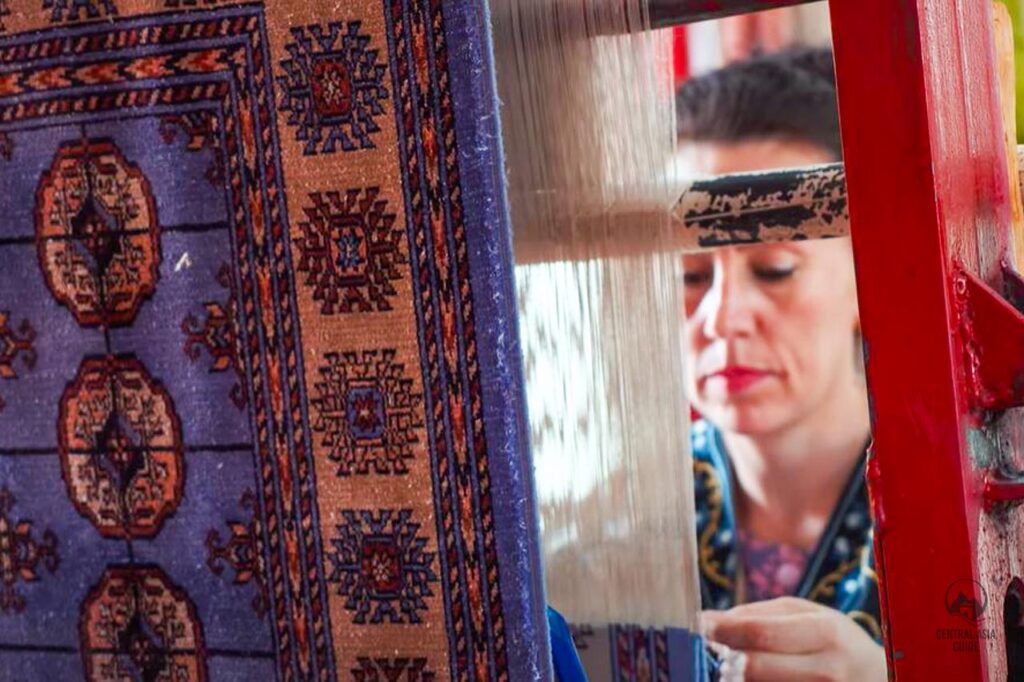Uzbek Carpets
Uzbek carpets
Every house in Uzbekistan is furnished with carpets. Although these days they are often factory-made synthetic rugs from China, traditionally they would have been hand woven locally. Each community used to produced carpets in a distinctive style and they were valued as much for their artistic qualities as for their functional properties. The largest single collection of carpets is thought to have belonged to the Emir of Bukhara as he had over 10 000 examples of this craft in his palace.


Uzbek carpet weaving techniques
Loosely woven style carpets
It’s not known exactly how long carpets have been woven in Uzbekistan, yet archaeologists have found spindles in Stone Age sites that are similar to the wooden spindles that are still used in some rural areas today. The loosely woven old style Uzbek carpets are still produced around Dzhizak and Nurata. Such carpets were and are often woven with a pattern of longitudinal stripes, edged with a chain of rhombuses and triangles.
Modern Uzbek carpets
Modern Uzbek flat-weave carpets can be woven from either woolen or cotton threads. The smooth surface is created by interlocking the warp (vertical) and weft (horizontal) threads. They are produced on a simple loom made from narrow, wooden beams. The width of the carpet strip is dictated by the width of the loom but typically does not exceed 50 cm.
To make a wider carpet, several strips must be stitched together. The flat-weave carpets produced in Bukhara are considered to be the finest in the country; those from Surkhandarya are unique in the base threads being in two colors.
Tufted carpets
The most valuable carpets are the tufted carpets. The finest fleece is used to produce their thread and a thread count of 100 or more knots per centimeter is not uncommon. This makes the production process exceptionally time-intensive and it requires an exceptionally high level of attention to detail; a single knot of the wrong color in the wrong place will ruin months of work if it is noticed too late.


Nomad Wool Carpets in Uzbekistan
The most ancient form of carpets was first produced by nomadic herders with surplus wool from their sheep and mostly placed to the bottom of the yurt to protect themselves from the coolness of the soil. The process has changed little from those times. When wool is kneaded with soap and water, it becomes a thick, heavy felt that is not only warm but, as local legend has it, it cannot be walked upon by a spider nor crawled upon by a snake.
Carpets are are often left in its natural color (usually a color like cream or grey) or dyed with natural pigments such as indigo (for blue), moraine (red) and pomegranate bark (yellow). In desert areas, women also made similar rugs with camel hair. This type of carpets are still hand made in Rishton by a small community of local Kyrgyz people who live in their own village next to the larger town of Rishton which is known for their ceramics production workshops.


Wool Carpet workshop held by Kyrgyz minority near Rishton
Less than 10 km from Rishton is the Ok Yer village. The village has a large Kyrgyz minority that was left on the “wrong side of the border” during Soviet times and who produce traditional Kyrgyz style handmade wool carpets. Head of the family, Bakhrom ake, will gladly show and guide you through the workshop and explain the details of wool carpet production. The actual work is done by a handful of active Kyrgyz ladies that are proud of their craftmanship.
Uzbek Carpets are traditionally women's job
Although men do sometimes produce knotted carpets, it is generally considered a job for women as it helps to have small, deft hands. Women pass carpet-making techniques from mother to daughter and it is still common to see young girls working at a loom. The warp threads are stretched on the loom, and onto these the weaver knots individual threads, hitting each one down with a metal hook so that it sits tightly alongside the previous knot.


Other crafts destinations in Uzbekistan
Page updated 27.2.2022